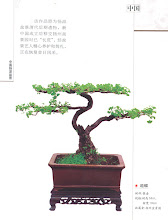中国继续扩大并发展它军事的军事潜力。中国导弹部队司令员靖志远(Jing Zhiyuan)宣布国家战略部队数量上和质量上的现代化。
中国政府在20世纪90年代期间制定打造匹配中国世界地位的导弹及核部队的目标。近十年来,中国导弹部队已经经历一些重要变革。中国政府发言人表示,该国的导弹部队已经以信息技术为基础。简言之,中国如今甚至有能力打击美国。
中国人为何要提高国家核能力?
军事与政治分析研究所军事预测中心主席特斯甘诺克(Anatoly Tsyganok)认为,中国努力成为世界超级大国并决心扩大战略部队以实现野心。
这对俄罗斯和美国构成直接威胁。俄罗斯受到的威胁可能更大。俄罗斯与中国的边界超过5000公里。中国人口众多,需要摆脱一些多余的人口。而在这方面,俄罗斯似乎是他们的唯一出路。中国如今状态大好,俄罗斯无法终结其日益活跃的核主动。
它的东风导弹系统可以打击莫斯科和圣彼得堡,这意味着中国几乎可以攻击任何一个俄罗斯城市。
地缘政治问题研究院的希夫科夫(Konstantin Sivkov)持不同观点。这位专家表示,“中国拥有新式的、可以承载多达十枚弹头的东风10和12洲际弹道导弹。这些导弹相当现代化,但精确性比不上俄罗斯和美国的。它们的保护设施不足以对付预防性打击。换言之,它们可以发起预防性打击,但无法进行报复性打击。”
中国之前就拥有核部队,但如今它们联合在一起了。当中包括导弹部队、装备弹道导弹的核潜艇以及太空侦察组。这样,中国如今有能力打击俄罗斯、美国和欧洲。
华盛顿和北京在非洲、拉美和东南亚地区有严重分歧。如果与俄罗斯发生冲突,中国不大可能用远程导弹,用中程的东风5和6导弹就够了。
政治与军事分析研究所的卡拉姆基恩(Alexander Khramchikhin)认为,中国有多达50枚可以打击美国领土目标的东风洲际弹道导弹。中国有几百枚20世纪70年代开发的中程导弹。
与美国相比,中国的核潜力相形见绌,不过它已经变成俄罗斯的严肃竞争者。俄罗斯摧毁自己的中程导弹,而中国却扩大它的战略储备。
可以预测,未来中国战略潜力还会进一步增长。例如,中国此刻正积极发展核潜艇和远程巡航导弹。(作者 Sergei Balmasov)



















